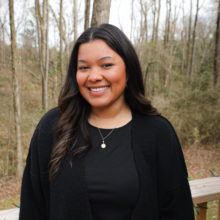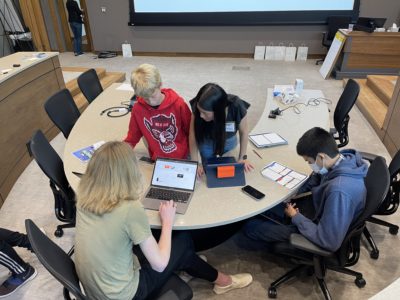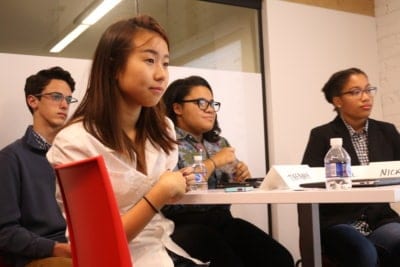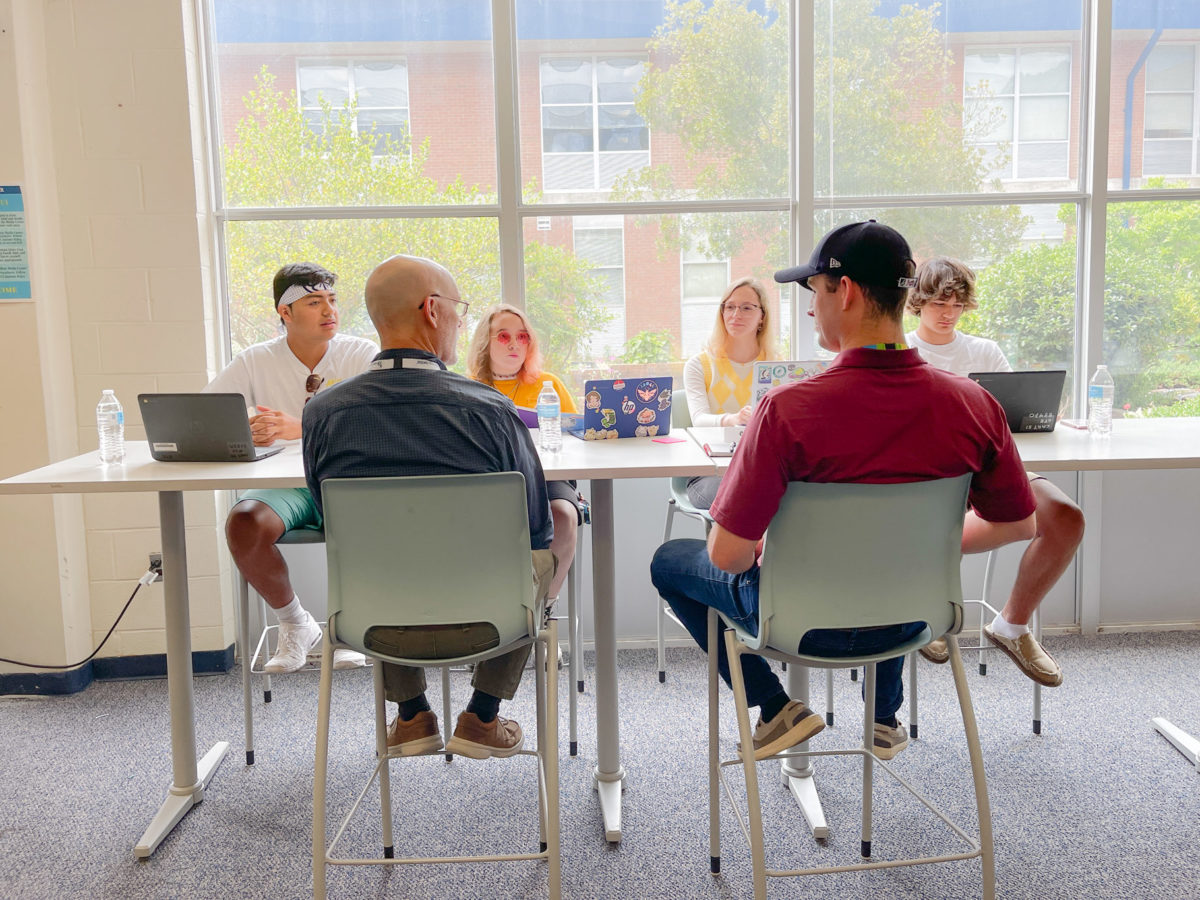

This summer, businesses across the state partnered with local school districts to hear pitches from students attempting to solve problems. This program, known as a Teamship, is just one way that the organization District C invites students to be part of solving complex, real-world problems.
During a Teamship, students are placed in teams of four and matched with local businesses to solve their problems. The stakes are high because these are real problems that real businesses face. Students meet with businesses, and then provided a solution at a “pitch event” just days later.
District C started Teamship over five years ago and provided six Teamship camps this summer in districts across the state. Participating districts included:
- Johnston County Public Schools
- Franklin County Schools
- Lenoir County Public Schools
- Cumberland County Schools
- Surry County Schools
- Wake County Public School System
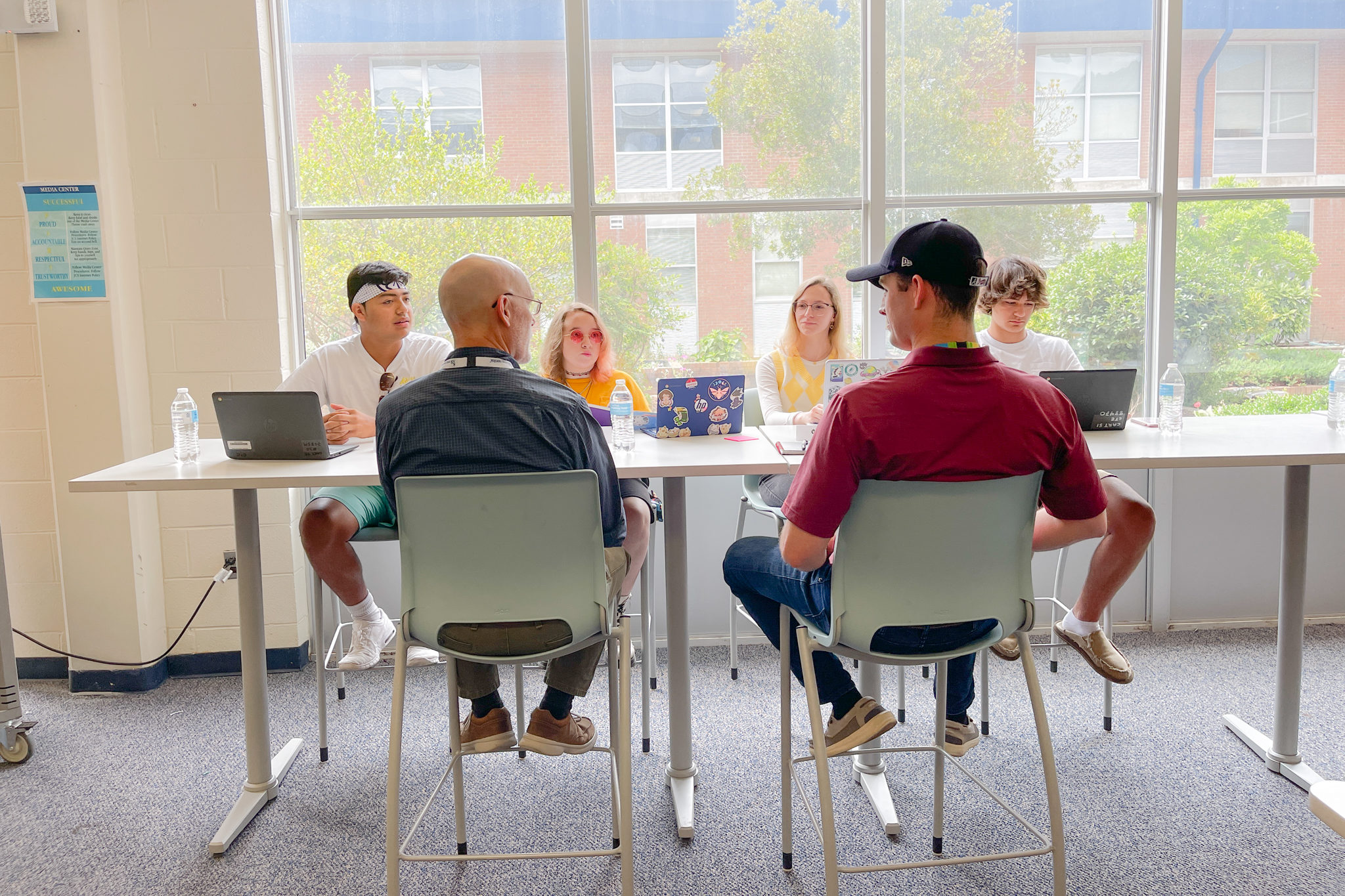

What is Teamship?
In January, state Superintendent Catherine Truitt called 2022 “the year of the workforce.” Truitt, and other state and business leaders, have continually emphasized ensuring that all high school students graduate prepared for postsecondary success.
Last fall, the N.C. Department of Public Instruction launched a statewide initiative to create a “portrait of a graduate.” This initiative is designed to determine what skills high school students need for post-graduation success.
Teamship is designed to prepare students for what District C calls the “human job description of the modern economy,” or working in diverse teams to solve complex problems. As the workforce grows and changes – becoming more automated – District C argues that preparing for the workforce is different now than years ago.
“I found what we see as an emerging and growing problem in education, which is that the things that students learn to know and do in school don’t align so well with the things that employers expect incoming employees to be good at in the workforce,” Dan Gonzalez, CEO of District C, said.
District C divides Teamship into four areas: Diversify, Launch, Solve, Pitch. Each area is designed to allow teams to reach their full potential. Teams get to know each other, get to know the problem and business, solve the problem, and share their solution with the business. District C provides a series of tools that allow teams to effectively solve their problems and work together. These tools are meant to provide space for both introverts and extroverts, allow for intentional teamwork, and reserve individual work time.
Business problems included social media plans targeted to younger audiences, plans to increase user engagement on an app, marketing for new programs, and more.
Implementing tools
The Teamship model incorporates a variety of tools, designed to make collaboration more deliberate and intentional. As they learn these tools, students slowly incorporate them into the design process as they work together to find business solutions.
Teamship pushes students to look at problems analytically, leverage their diversity to approach problems with varying perspectives, and practice self-awareness. Each of the 12 “tools” that District C provides allows students to put this into practice. These tools include:
- Questioning
- Take 5
- Solo Flight
- Design Process
- Coding
- Agenda
- Like*
- Mind Map
- Process Map
- Roadmap
- Decision Matrix
- Observation
In practice, this manifests as students taking solo time during the design process to brainstorm – this is called Solo Flight. District C believes this allows introverted students to do their best thinking and ensures all voices are heard.
The Like* tool allows teams to take the data and information they have collected and then consolidate it down to the most critical components. The * is used to mark the components that they “like”.
Other tools, like Questioning, push students to dig deeper into their problems and consider their teammates’ perspectives. Teamship removes the procedural process of teamwork to instead make it more strategic.
Gonzalez said these tools allow teams to engage in meaningful conversations.
“Tools that will allow students to ask good questions of each other. Tools that will give introverts in the group the opportunity to do solo thinking before they’re sharing their ideas. Tools that will help every member of the team share their voice and their perspective,” Gonzalez said. “Essentially, in a nutshell, tools that help them do the work more effectively and in an optimized way.”
As students progress through their tasks, these tools surface naturally and they often default to the tools without being prompted to do so. And that’s by design. District C created Teamship to be self-managed and self-directed.
Giving students room to grow
Douae Ouhda is a student at Wake STEM Early College High School. Even early in the Teamship process, she said she saw personal growth.
“I really struggled with communication and then dividing work. So I feel like just in the short amount of time, using the methods they’ve taught us and (and the Take 5 tool), it’s been a lot easier to communicate our problems and our situations,” Ouhda said. “So I feel like, it’s just the little tools that we’ve learned have helped communicate.”
For some students, Teamship’s design process adds meaning to the group work they often do in the classroom.
“Usually, when you’re starting a project, like in high school, you’re just all over the place, coming up with ideas and doing different steps at the same time,” Troy Warren, another Wake STEM student, said. “But today, we’ve just been focusing on the understanding phase. And that’s been really useful to take what we have in the understanding phase, then to create ideas and make prototypes.”
Gonzalez said this was intentional. In a way, the Teamship model is in opposition to typical group work and projects that students experience in school.
“What we’re trying to coach through Teamship is, how do you unpack a problem? How do you take the time to understand different perspectives around that problem? How do you build back up to a solution?” Gonzalez said.
Cornelius Thomas Jr. is the Career and Technical Education (CTE) program specialist at Johnston County Schools. He said Teamship is helping prepare students to be engaged and successful in their local communities.
“It’s really beneficial for them to engage in this type of analysis so that they can really start to get comfortable with what this looks like in a professional environment,” he said. “Because it’s really this organizational process and when it comes to project management and optimizing efficiency, that’s really the keys of it.”
Partnering with N.C. businesses
One main aspect of this summer’s Teamship camps is partnerships with local businesses. This summer, this included companies like:
- Cisco
- Down East Wood Ducks
- Encoura
- Harmony: NC LGBT + Allied Chamber of Commerce
- Johnston Community College
- Northern Regional Hospital
- Novo Nordisk
For students, working with real businesses to solve problems is a major benefit of Teamship. Mary Atkinson, a student at Smithfield-Selma High School, said working on an authentic problem makes the skills and experiences gained seem more purposeful.
“Because most of these (classroom problems), it’s hypothetical, but this is an actual problem that someone is facing,” Atkinson said. “It gives you the reality of the workforce and not just a fabricated, hypothetical in the most perfect situation because things in life aren’t perfect.”
Businesses appreciate the perspectives that students bring in their pitches. For Melissa Caperton, senior director of education programs and partnerships at Encoura, being able to talk with students and center their voices was what attracted the company to Teamship.
“My business is aiming to provide a service to young people. And so having their voice and their ideas is critical to our success,” Caperton said. “And it’s just a really wonderful opportunity to engage with them in a conversation about what would be meaningful to them.”


For Caperton and Encoura, hearing students’ ideas and learning what they want validates the organization’s work. For Yonas Kemal, a junior at the University of North Carolina at Chapel Hill and business analyst intern for Cisco, Teamship inspires big ideas.
Kemal attended a Teamship camp when he was in high school. He said being involved with the organization then prepared him for college and his internship, but also inspired him to think outside of the box.
“It really did empower me,” Kemal said. “I wanted to do something big and it was just because I saw them do it.”
Gonzalez said companies have plenty to look forward to when it comes to career talent in North Carolina.
“North Carolina has so many young, talented students who are going to do really important, critical things in our communities across the state,” Gonzalez said. “To companies across North Carolina looking to hire local talent: there’s so much of it. And these students are so good and so capable. They just need the support, and they need the opportunity.”
Editor’s Note: A previous version of this post misspelled the name of Cisco’s business analyst intern, Yonas Kemal.
